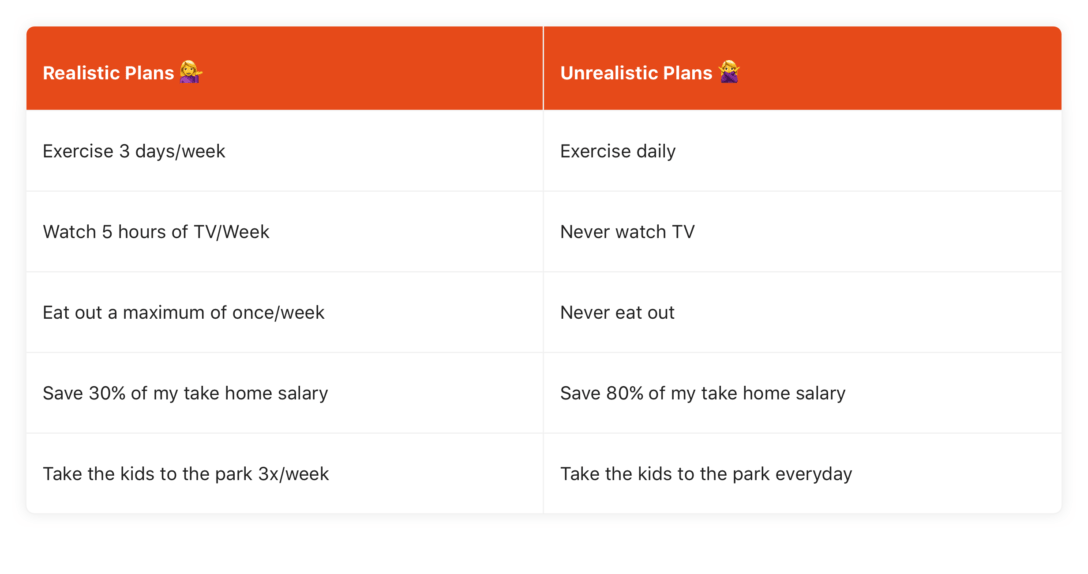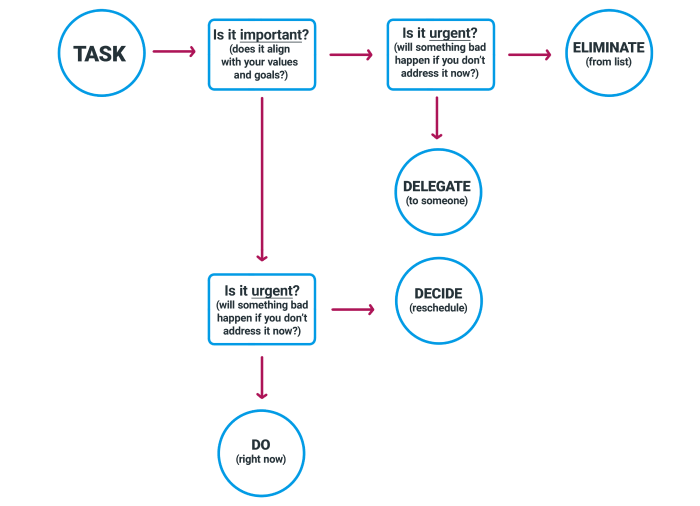Organizing our daily work schedule goes beyond making stricter time slots and militantly sticking to them. There are countless factors (including distractions) that can throw us off no matter how disciplined we try to be. It’s about time we stopped trying to use one formula we’ve seen over and over again, and look at it as a subjective thing. To really learn how to organize daily tasks, we need to find an approach tailor-made for us.
We’ve done our best to research ten tips that will guide you into finding a method that suits you the best. That means learning how to prioritize, how to handle failure, and how to value your time.
Tip #1: Create an order that suits YOU
The absolute first and foremost is knowing yourself.
It’s no use blindly following instructions, or using templates and plans premade by productivity coaches and expect stellar results. Just because they worked for them doesn’t mean it will work for you.
If you are the type to struggle with complex tasks in the morning, but you’re able to clear them with ease in the afternoon, don’t force yourself into an “early bird” routine. Instead, plan your daily tasks around your biological clock.
Dr. Stefan Volk of the University of Sydney Business School is one of many researchers exploring the intricate connections between office productivity and the biological clock. He claims that our body’s rhythm does have multiple highs and lows throughout the day, but only one peak productivity period. If you work outside your chronotype, there is no schedule in the world that will make you more productive. For example:
- Morning types can fall in the trap of doing menial tasks at their most alert – emails, calls, meetings, reviews, etc. By the time important tasks roll in, they’re already past their prime.
- Evening types force themselves to do big, focus-intensive tasks as soon as possible because it’s a long-standing misconception that mornings are for heavy work. They end up tired and unfocused, and naturally – blame themselves as the work gets sloppily done.
And perhaps the most famous chronotype advocate, Dr. Michael Breus, advises getting to know your type first, to make full use of your workday.
Tip #2: Be realistic and set realistic goals
We’ve all made the same mistake of overestimating our dedication.
How many times have you heard someone say they’re quitting sugar, only to see them buy a candy bar just three days later? And when asked about it, the person gets defensive, feels defeated, and claims either to have given up or that they’ll start anew next week. And so the cycle repeats.
Every productivity coach worth their salt will tell you that specific goals and easily digestible tasks are the way to go. For example:
Instead of:
Write a 5-page draft by tomorrow;
Try using:
8 AM – 10 AM Research the topic
11 AM – 1 PM Write the first two pages
1:15 PM – 3 PM Write the second two pages
3:30 PM – 4:30 PM Write the last page.
The difference is clear. The first example shows how most of us write down tasks in our work schedule: we know what we need to do, and by when. We leave the details to sort themselves out, which ultimately makes for a messy, disorganized schedule.
But, if we break down the larger tasks by their components, we immediately introduce order. The act alone makes us calculate how much time each step will require, which is invaluable information.
Throughout that calculation, you can realize, for example, that you won’t have time for a task you’ve planned to do. So right away, you can either delegate it or move to tomorrow. But, had you used the first method, you would probably realize there is no time for that task only when it was too late to delegate or postpone it.
Some other examples:

Tip #3: Accept failure as a part of the learning process
Staying in the same lane as with the previous advice – keep your expectations low.
To hope for a drastic change as soon as possible is to fail from the get-go. Instead, keep in mind the following:
- The first week is going to be you wrangling with the schedule, making necessary changes;
- The end of the first week will be analyzing your progress (both successes and failures), and altering the schedule for next week;
- The second week will see you work under a revised schedule;
- The end of the second week will be again analyzing progress, etc.
- The third week will see even more improvement, and core changes will become solidified.
And so it will go from week to week. Every time you will see new places for improvement. New issues will pop up, unexpected situations that affect your schedule (personal issues, other people’s tasks, rest days, missed deadlines, etc).
So start being more lenient with yourself and your schedule. Normalize failure. Otherwise, you will interpret every mistake as a sign that you aren’t making progress, when it’s completely the opposite.
Tip #4: Fit your schedule around the time you have
Contrary to popular belief, you shouldn’t look for ways to make “more time in the day”.
We all have 24 hours, no more, no less. Burnout is the direct result of people working themselves to the bone, thinking that strict, disciplined schedules and endless automation of small tasks will somehow give them more time.
What you want to do is learn how to prioritize. Because even if we all have the same hours in the day for a set number of tasks, not all of them are created equal.
Some will be more important than others, while some can be eliminated completely.
And to properly adopt this mentality, you’ll have to try our next advice.
Tip #5: Learn prioritization
One of the most successful methods of prioritization is the Eisenhower Matrix.
It’s a framework used to determine which tasks are the most important for reaching your goals, and which ones slow down your progress.
With the Eisenhower Matrix, you sort your tasks based on four criteria:
- Urgent and important – do right away (emergency calls, fire, injury, etc.)
- Urgent but unimportant – delegate to someone (setting up meetings, paying bills, chores, etc.)
- Important but non-urgent – do it later (long-term goals)
- Unimportant and non-urgent – eliminate (time-wasting activities)
Task prioritization follows this simple schematic:

This graph and more can be found in our detailed, step-by-step guide on how to use the Eisenhower Matrix to organize your daily tasks.
Once you know what your priorities are, it becomes easier to make an orderly schedule. Combined with knowing your energy levels throughout the day, you will be able to set the biggest priority tasks during times when you are most productive.
Tip #6: Predict distractions
We often discuss different ways of dealing with distractions. But this time, we’d like to point out the importance of knowing and predicting the distractions before they occur.
There are plenty of everyday occurrences that you know will take time out of your day. The best way to eliminate them so they don’t affect your work schedule is to prepare for them earlier.
Some examples:
- Those working at home can encounter issues where, for example, something needs to be fixed (plumbing electricity), but the packed schedule leaves little to no time to be with the repairman. You can prepare for the distraction by asking them to come at a time when you have less important tasks or have a friend or family member see them instead of you.
- Some people are asked to take time out of their workday to supervise trainees. One way to prepare for the distraction is to give the trainee two time slots in the day for questions. During the day, they gather questions as they work, and when the time comes for a meet-up, they can ask about any issues. This way, you won’t be pulled by the sleeve during peak work hours, and the trainee is given time to find a solution on their own.
- If you’re holding a meeting on a particularly busy day, and can’t delegate it, you can cut it shorter by doing an FAQ at the end. Anticipating the most common questions and answering them right away. Then, you can schedule another, shorter meeting the next day for any unresolved issues.
It all comes down to knowing your work schedule for every consequent day. Every task has a potential distraction attached to it, so preparing in advance can be more useful than preventing it on the spot.
Tip #7: Empty your head
While on the topic of distractions, we should discuss how much our brain loves them, even though they cause severe unhappiness, as researched by Killingsworth and Gilbert. The same paper discusses how a large number of those surveyed confirmed the speculation that mind-wandering and distractions ultimately result in sadness, nervousness, and feeling inadequate.
Aside from muting all of your notifications, one useful thing to do is keep a pen and paper by your side at all times. If your mind starts to wander towards planning tomorrow’s lunch, or to the coffee meeting with a friend, take that pen and write it down immediately. Write down ideas for lunch, or possible chatting topics for the cafe meet-up.
Because as long as those thoughts remain in your head, they will keep floating there, returning every once in a while to pull you away from work.
The same goes for remembering something you need to buy at the store, an email you have to send, a person you have to contact, or an article to read… Don’t immediately jump to do that minor thing – write it down, and save it for later.
Otherwise, your brain gets used to you catering to every little alarm it sets off. Before you know it, you’ve spent an hour on menial tasks that serve you no purpose that day.
Tip #8: Measure only what matters
Maybe you’ve heard of the saying: “What gets measured gets managed”.
But did you know it has been proven wrong? And even attributed to the wrong person?
We love using time trackers to organize our work calendars. They give us detailed information on where our time went, how our day has gone, and which areas need improvement. They help with billing clients correctly and even make reports to track progress as we get more organized.
However, on the journey of making better daily task lists, one can get tempted to take note of every little thing that happens. Every 5-minute break, every phone call, inbox cleaning, coffee break, etc. In these cases, measuring every single break will not make you better at organization.
The most important things you should be tracking are the tasks that matter. Those that affect your long-term plans.
Now we do have to track breaks when we notice that time-wasting is becoming a problem in our work schedule. But for all other intents and purposes, knowing how much time you spent on a phone call with the plumber is hardly going to improve your daily workflow.
Be mindful of which activities actually need tracking because not all of your time weighs equally.
Tip #9: Track progress
For a permanent change to occur (and stick), you need to feel motivated to keep going. And the best motivator is undoubtedly seeing how far you’ve come. It’s in our blood, we can’t help it – that’s why we love those before and after fitness and lifestyle photos.
Progress keeps us pushing because we can see there’s been a change for the better. The effort doesn’t feel futile.
The same goes for our productivity. In the digital artist community, there was a brief trend where one would fill in a gauge drawn on paper every time they drew a certain thing they wanted to improve. And by the end of a week, two weeks, or a month, they will have filled out the progress sheet.
Many developers have, in much the same way, gamified progress tracking. There are numerous apps that help you follow through with your daily habits, and provide a report after a specified period of time.
Investing in a progress tracking app (or simply noting every day you’ve managed to track your schedule) will have a positive effect on your motivation.
Here at Clockify, we’ve compiled a list of 29 best time tracking practices that detail out what you can or should track to accurately measure progress.
Tip #10: Introduce changes gradually
Whatever changes you decide to adopt, make sure you do them gradually, and stretch them over a period of time. Remember the discussion about setting realistic goals and expectations for yourself, and how easy it is to get overwhelmed.
Start off with one habit you want to try. For example, during just the first week you can incorporate one of the following:
- shift all of your most demanding tasks before 10 AM and 2 PM, before lunch;
- cut down your to-do list to 5-10 tasks daily;
- sort out your priorities and adjust the schedule to it, etc.
Any one of these would be a good start to your productivity shift. However, doing all three at the same time is an overload. Because if you focus on a single change, it is easier to track and gauge whether it really makes a positive change or not. Plus, it’s easier to stay motivated when there are fewer things to pay attention to.
The takeaway
Getting better at organizing work tasks can come fairly quickly, but mastering the skill takes a while. The important thing to remember is to find a framework or a method that suits you specifically. And if it means you need to go through weeks of trial and error, then it’s a good thing, because it allows for quick discarding of approaches that don’t work. Instead of stubbornly sticking to them, thinking the problem is you, you can try others, until you find the perfect one.
And so, the best advice is to give these tips a chance, and use them as a guide to find the one right method, and make your work-life infinitely easier.



